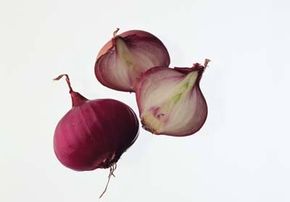You're hurrying along and the front of your shoe catches on a crack in the cement, sending you tumbling to the ground. When you get up, you find that not only is your ego bruised, but you've managed to peel away the skin on your elbows and knees. You've got yourself a collection of painful scrapes.
If it's any consolation to your bruised ego and skin, you've just had one of the most common accidents. Americans get almost 18 million lacerations a year. Now your biggest concern is figuring out how to take care of yourself without alerting the whole office to your fiasco. In the following pages, we'll teach you the easiest, most effective home remedies to help heal cuts and scrapes.
Advertisement
How the Body Heals
Cuts and scrapes should be attended to immediately because of the risk of infection. Skin is the body's shield against germs. When a foreign body invades the skin, germs have an open invitation to raid healthy cells. Left untreated, cuts and scrapes can become painful sores, which are wounds that are slow to heal. Sores can also come from acute or chronic bacterial or fungal infections or from diseases that affect the body's ability to heal, such as diabetes or AIDS.
An amazing number of things happen when you cut or scrape yourself. When you disrupt the skin, a clear, antibody-containing fluid from the blood, called serum, leaks into the wound. The area around the cut or scrape becomes red, indicating that more blood is moving into the wound site, bringing with it nutrients and infection-fighting white blood cells. Nearby lymph nodes may swell. After a few days, pus (which contains dead white blood cells, dead bacteria, and other debris from the body's inflammatory response to infection) may form. And finally, a scab develops to protect the injury while it heals.
A scrape tends to hurt more than a cut because a scrape removes a larger area of skin and exposes a greater number of nerves. Scrapes often damage some blood vessels, so they are prone to bleed but usually not as heavily as cuts do.
As you can see, there's a lot more to know about everyday cuts and scrapes than you might imagine. In this article, we'll offer you helpful hints to take care of one of life's most frequent problems. We'll begin in the next section with some tips on how to keep your wounds clean and healthy.
For more information on cuts and scrapes and how to heal them, try the following links:
- To see all of our home remedies and the conditions they treat, go to our main Home Remedies page.
- For minor scrapes and nicks, you can turn to your garden to help the cut heal faster. Find out more in Herbal Remedies for Cuts.
- You can learn more about the specifics of the healing process by reading out How Blood Works page.
- How to Remove Blood Stains will teach you important techniques for rescuing your favorite clothes.
This information is solely for informational purposes. IT IS NOT INTENDED TO PROVIDE MEDICAL ADVICE. Neither the Editors of Consumer Guide (R), Publications International, Ltd., the author nor publisher take responsibility for any possible consequences from any treatment, procedure, exercise, dietary modification, action or application of medication which results from reading or following the information contained in this information. The publication of this information does not constitute the practice of medicine, and this information does not replace the advice of your physician or other health care provider. Before undertaking any course of treatment, the reader must seek the advice of their physician or other health care provider.
Advertisement


